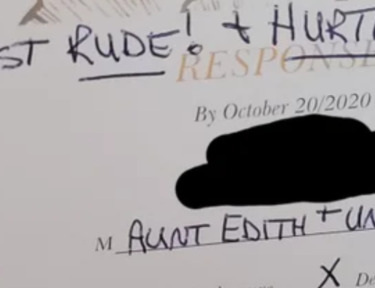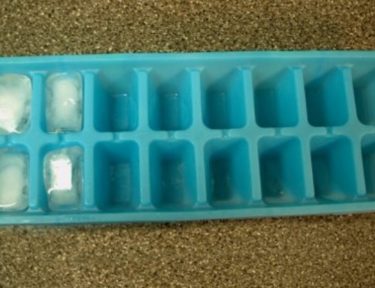8 Essential Floor Cleaning Tips Everyone with a Floor Needs to Know
Not all floors are made equal. Each type of floor has its own unique traits and therefore its own unique cleaning requirements, and to keep your floors from getting ruined, you best know how to clean your specific floor-type. Are you going to clean hardwood the same way you would clean tile? We certainly hope not. If you’re not sure where to begin, don’t worry. We have the easiest and safest ways for you to keep your floors – no matter what kind they might be – looking spotless and new.
1. Natural Stone Floors
The one big no-no with stone? Acidic products. So that means the cleaning miracle that is vinegar should stay in the pantry, folks. Bleach and ammonia will ruin these types of floors as well. Your best bet is a pH-neutral, non-chelating cleanser ( like this Naturally It’s Clean Floors cleaner) that won’t accidentally react to the minerals in your stone floors.For unsealed stone tiles, simply use a microfiber mop and hot water, or a steamer for bigger messes. No chemicals whatsoever should be used on these.
2. Vinyl Floors
Found in both kitchens and bathrooms, vinyl floors are quite popular and very easy to clean. A weekly cleaning is suggested using a mixture of 1/4 cup vinegar in a 16-ounce spray bottle with 1 drop of dish soap and warm water. Spritz this on the floor in sections and wipe clean with a microfiber cloth or mop.Every so often, try steaming your vinyl floors for a deeper clean. This steam with get rid of stains and bacteria on your tiles AND your grout, so you can rest assured you area is thoroughly cleaned.
If your grout is spectacularly dirty, you might need to power wash it. Sounds expensive, right? It doesn’t have to be with the Grout Grime Buster 3000…which is a simple DIY you can make for under $5.
3. Linoleum Floors
Unlike nearly indestructible vinyl floors, linoleum floors are more delicate and have to be cleaned with a little extra TLC. Usually made of materials like linseed oil, resin, limestone, wood fiber and cork dust, linoleum floors are colored with mineral pigments. This means you’ll treat them similarly to natural stone floors and cork floors (which you’ll see next).Put a few drops of dish soap into a spray bottle with hot water. Use that mixture only to spritz down the surface and then use a microfiber cloth or mop of dry the floor clean. The floor should dry almost immediately, but if it feels sticky to the touch, give it one more wipe down.
4. Cork Floors
Natural cork floors are lovely, but they are very easy to damage – especially with water. For this reason, most cork floors are sealed, but you still need to proceed with caution. Clean once a week with a solution of 1/4 cup vinegar with 1 drop of dish soap and warm water in a spray bottle. Make sure not to shake the mixture – that will cause suds, which are not so good for this floor type – but rock the bottle back and forth to mix. Spritz and wipe with a microfiber cloth as you go. Vacuum often and clean up spills immediately to keep up the clean.5. Laminate Floors
Although laminate floors resemble hardwood, it’s important to remember they need to be cleaned VERY differently. You’ll see how labor intensive hardwood can be, and you have a bit of an easier job is you have a laminate look-alike. Laminate is made to be sun-resistant and light-resistant to maintain a like-new appearance for a very long time. That being said, you should never put liquid or polish on laminate floors; the moisture will get under the boards and ruin the laminate.Instead, dry mop and vacuum regularly, and only use a slightly damp cloth for spot treatments.
6. Hardwood Floors
Beautiful and elegant, hardwood floors need a lot of attention. And if they’re not cleaned the right way, you might as well not be cleaning them at all. First, figure out what the finish is on your hardwood. The two most common ones are polyurethane and wax. To test your floors really quick, rub your finger across the hardwood – if there’s a smudge, you have a wax finish.Wax finishes and untreated wood (hardwood with no coating on it), should not be washed. But you’re not entirely off the hook – you should sweep, dust mop, or vacuum regularly, just like laminate floors.
For polyurethane finishes, you have two different solutions to chose from. The first is a mix of ¼ cup mild or pH-neutral soap (try Seventh Generation All-Purpose Natural Cleaner Concentrate) with water in a bucket. Use a damp-mop to clean the floors and microfiber cloth to dry them.
The second is a vinegar mixture, which some floor experts will say to stay clear of – vinegar may dull the shine of your floor over time, but this solution is a good thing to whip up and use in a hurry, or if you have no pH-neutral soap on hand. Mix some white vinegar and dishwasher soap in a wringer bucket with warm water. Use a microfiber mop to clean the surface and a microfiber cloth to dry.
7. Tile Floors
Tile is basically the fancier older brother of vinyl floors – no offense to vinyl, of course. But what that means is, although tile may have been more expensive than vinyl to install, it’s just as easy to clean! Simply mix 1/4 cup vinegar in a 16-ounce spray bottle with 1 drop of dish soap and warm water to spritz on your tile surface, wiping down with a microfiber mop or cloth. For an occasional deep-clean, make sure to steam the tiles and grout!8. Carpets
Unlike the other surfaces, carpets are kind of in a league of their own. However, they’re a floor type nonetheless! Just some slightly different rules apply to them. There are two different types of cleaners you will rely on to get your carpet regularly clean, a detergent based cleaning solution and a household product solution, both of which you can learn more about here. Both are easy to make at home, although the detergent solution (simply detergent and water) is my personal go-to.For a simple spot cleaner – for those, oops, there goes dinner on the carpet moments – mix equal parts vinegar and baking soda until you form a thick paste. Dilute this mixture with warm water until mixture becomes a thin liquid and scrub it into the stain with an old toothbrush or sponge.
Got pets? Then you know that pet hair is IMPOSSIBLE to get out of carpets. This easy little hack is a lifesaver! Using a squeegee that you can pick up at any dollar store, you can rake the hair right out of your carpet. See this little tip in action here.
Do you have any tips for cleaning the types of floors we mentioned? Do you have a different type of floor and how do you clean that surface? Share your thoughts in the comments section below.




